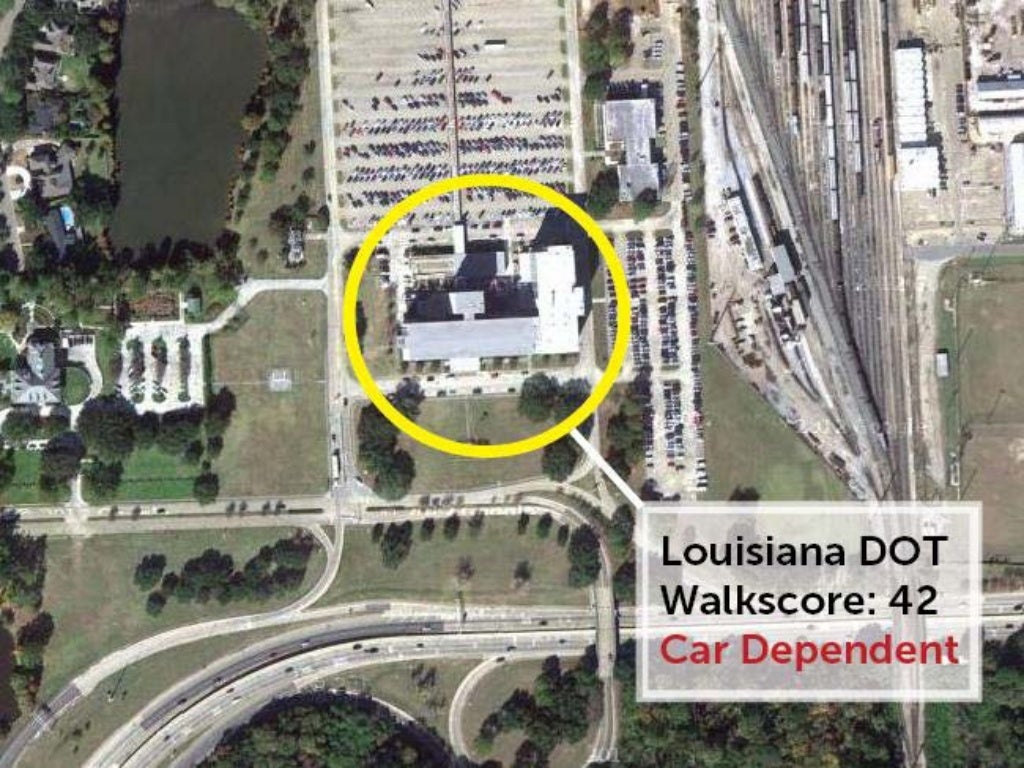So, lets think about transportation: Who makes the policies and projects which play a huge role in our transportation choices? How does their own world of transportation look? Well, I would like to think that the folks making decisions are at the pinnacle of knowledge-action on their respective topics. So, what does it mean that the Louisiana DOT is located so that pedestrian approach is all but futile?
 |
| "No walking or biking along interstate", 6th most inaccessible-without-car-DOT in the nation |
There is an underlying importance with this sitch. Planners, designers, and observant people anywhere will tell you that this is not the way things should operate, but PPS does well in nothing the rarity in transferring ideals to instantaneous reactions:
The driver, being both a human being and a law-abiding citizen, yielded to the pedestrian. But the ped stopped and waived us through. We insisted, and after a confused shrug, he proceeded along his right-of-way. Some might read this merely as a courteous interaction between two users of the transportation system. I saw something more sinister: a microcosmic reminder of the hierarchy at play on our nation’s roads, in which the convenience of the driver subordinates all other forms of transportation. I immediately cracked a joke that the yielding pedestrian was probably a traffic engineer. (As it turned out, he was.)The role of architects, planners, and anyone working to create space should be heavily focused on gathering subjective information and working to facilitate, refine, and reflect on the points of others with a clear analyzation of your own ego. For creation of a public space or any piece of another's life, a push towards your ideal world should be present in every system at play, and every action that your involvement undertakes and creates, where possible. This goes for anyone, as we all affect others: if you interact, reflect. Otherwise, the actor succumbs to the pressures of the world's dehumanizing systems instead of believing in their ideals and opening the door to a reality they can thrive in.
But what grants an architect validity to their ideal world, other than knowledge of materials working together? Architecture degrees are by no means ethical compasses, and money trumps morals in the world of developing our environment. If actions to produce your utopia would not exist in your utopia, idealized opportunities look better from afar + without ugly details, and if your utopia looks less appealing from another's shoes, your ideals quite likely will not transfer to the real world as you desire.
So who are you? How to go about creating what you want to live? When is being "realistic" too much acceptance of the status quo and normative values?
 |
| No fascist architects, no architects for the fascists. Palazzo della Civilta Italiana, Rome |
